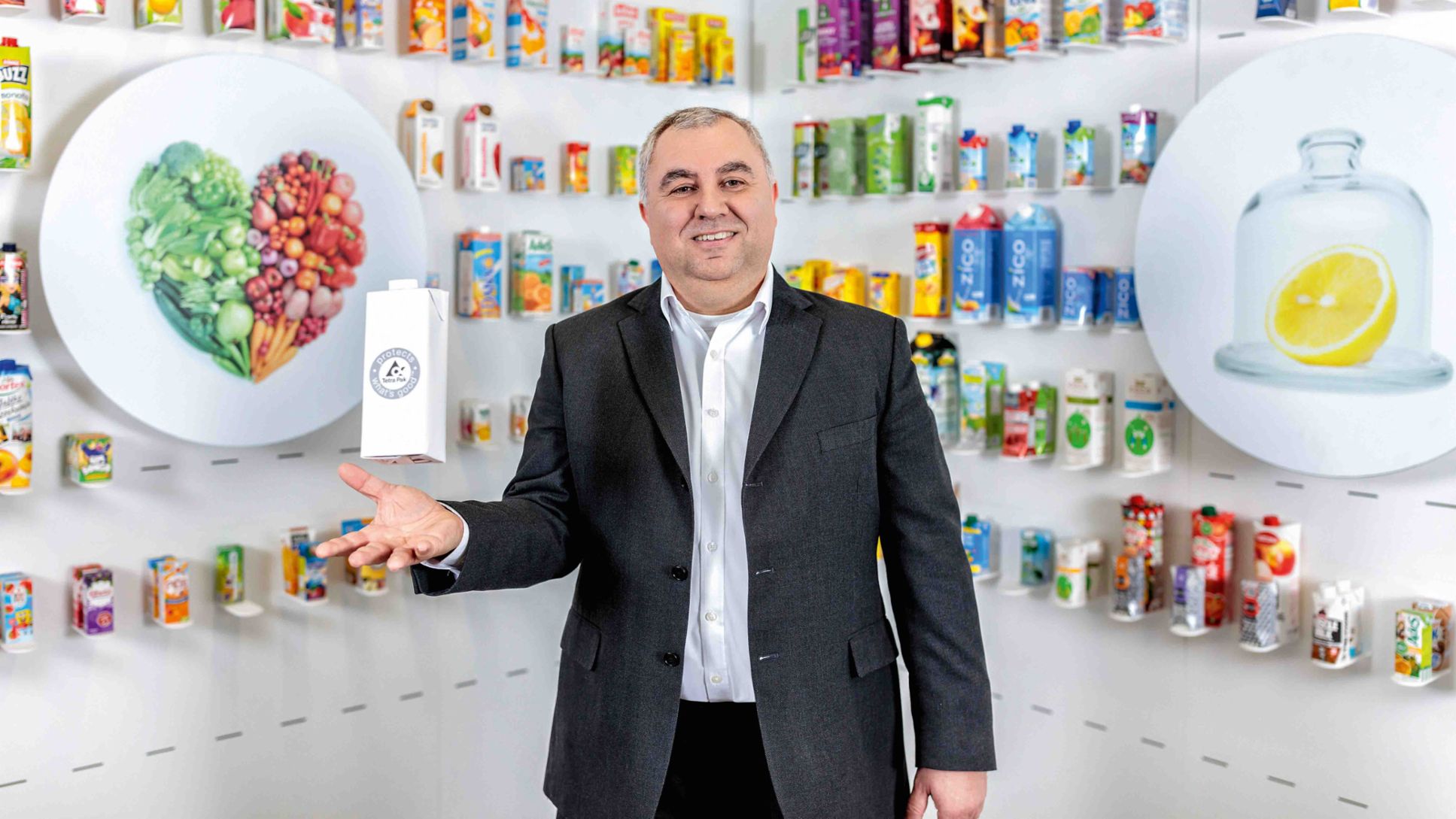Will milk cartons learn to speak and tell consumers what type of muesli they’re best suited for? Will juice containers on supermarket shelves recognize tired looking customers and recommend power smoothies? Will cartons of water automatically order replacements when supplies run low? If there is anyone who knows what food packaging of the future will look like, it is Roberto Franchitti. But he responds with a question of his own. “It’s not so much what or how,” he says, “but more a matter of where.”
A Londoner of Italian descent, Franchitti is Vice President of Research and Development for the Carton Value & Economy division of the Tetra Pak Group, the world’s leading producer of drink cartons. There are different answers to the question of what food packaging will look like, depending on the market. “We are active worldwide,” he says. “We produce around 190 billion cartons a year—or 20 for every person on earth.”
No such thing as a single trend
Trends are as varied as groups of consumers themselves. One example comes from the dairy sector. “Vegan diets are increasingly popular in highly developed markets. Soy-based products and other alternatives to milk are on the rise in these areas, as are low-calorie drinks. But in other places like China and the Middle East, demand for milk is growing.”
Packaging sizes are also changing. Franchitti recently visited a customer in Japan, a country with a high proportion of elderly people. “They have a need for packaging that doesn’t require much strength to open, and also comes in smaller sizes.” In a series of tests with seniors, the producer found that a large percentage of them had difficulty opening the usual family-sized packages. Consumer research has also shown that 40 percent of one-liter milk cartons are not emptied. Tetra Pak’s customer in Japan succeeded in significantly raising its share of the market by switching to smaller packaging sizes.
The lesson to be drawn from these examples, says Franchitti, is that “we have to be ready for all kinds of trends.” That applies not only to cartons but also to the filling machines that Tetra Pak makes at its plant in the Italian city of Modena. In the food industry, these machines are generally operated for more than a decade, so they need to be adaptable to trends we have not yet identified.
Development is needed in precisely this area. “Our Hyperspeed machines fill 40,000 cartons an hour, or 960,000 a day,” says Franchitti. “They run extremely efficiently and reliably. When our customers bought them they were interested in high production volume and low costs.”
High rate of change
But today there is a need for flexibility, and there are two reasons for this. “Customers want more individualized shapes and sizes for their packaging, and they’re also seeking greater variety in the content.” Moreover, the rate of change has picked up. “Sales departments used to set the pace with campaigns and other promotions. But now the driving force is social media. What’s popular in certain markets and contexts today may be passé tomorrow. And that can happen very quickly.” Franchitti describes a recent example: “The idea that whole milk is great for building muscle mass spread rapidly on Swedish Internet forums for bodybuilders. Demand rose extremely quickly—and then dropped just as abruptly when the community returned to low-fat curd products.”
For the food industry in general and Tetra Pak in particular, that underscores the need to be more agile and respond more quickly to trends on the market. First of all, these trends have to be identified. And then, as Franchitti explains, it’s important to have a very precise understanding of the respective society and its consumers. Not only is Tetra Pak active on social media, but Franchitti himself monitors Facebook, Twitter, and other platforms for information.
Modular machine concept
But how can these trends be met on the level of machines—especially given that filling facilities generally run around the clock for more than a decade? The answer is to take a modular approach to the machinery. Here is where Porsche Consulting enters the picture. Together with Tetra Pak, its consultants laid the foundations for the next generation of machines with a completely modular structure. They modeled them on the systems used to design cars by high-volume producers in the automotive industry, such as Volkswagen.
The new machines can be flexibly adapted to changing parameters like packaging size, filling performance, and other functions by simply replacing or adding individual modules. “Customers will no longer have to make decisions that commit them for many years to certain packaging sizes and filling features,” says Franchitti. This benefits not only the food producers but also Tetra Pak. “We can use the modules for different series of machines, which makes us more efficient in our development and our production. We can also ship individual modules in containers to customers overseas and then set up the system on-site—yet another way of lowering costs.”
Learning from the automotive industry
The method from the automotive industry that Porsche Consulting is applying leads to complete modularization. Based on a list of specifications developed jointly with the client, it even includes new functions. For example, Tetra Pak is planning to process 100 percent of the water used to clean its machines, for which a separate module is needed.
Managers from departments across the value chain at Tetra Pak were involved in the project—including marketing, sales of both packaging and machines, production, and service. What has Tetra Pak learned from this? “The consultants showed us a new perspective,” says Franchitti. “They taught us how to split up a machine into systems and subsystems and then to remove or combine these elements via standardized interfaces. That was new for us. Now we’re taking the wheel and starting to actually design the new generation of machines.”
New technologies
In parallel to this, Porsche Consulting and Tetra Pak are also working together on the content side of the new generation of machines. Giulio Busoni, who is responsible for the consumer goods industry at Porsche Consulting Italia, reports that “together we’ve examined around 50 digital applications and how they affect machine designs. These include functions like being able to trace packages and register quality-related data for each one, as well as new technologies like additive manufacturing and innovative types of Industry 4.0 architecture.” Tetra Pak is therefore superbly prepared for the next steps in digitalization to be taken by the food and packaging industries.




